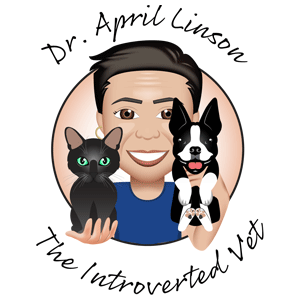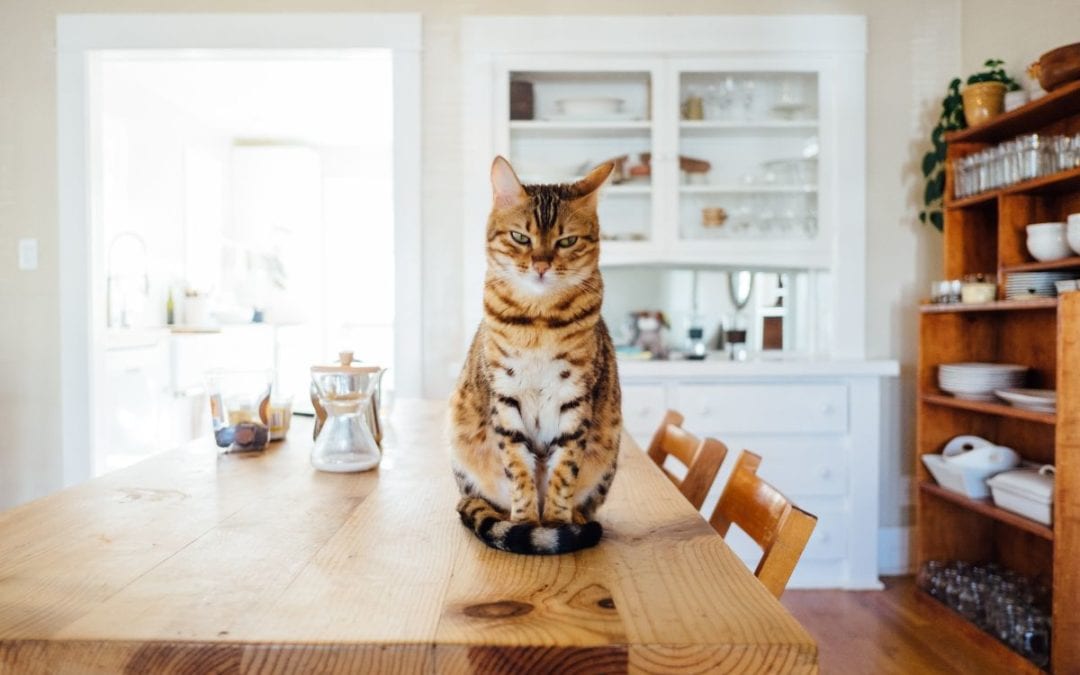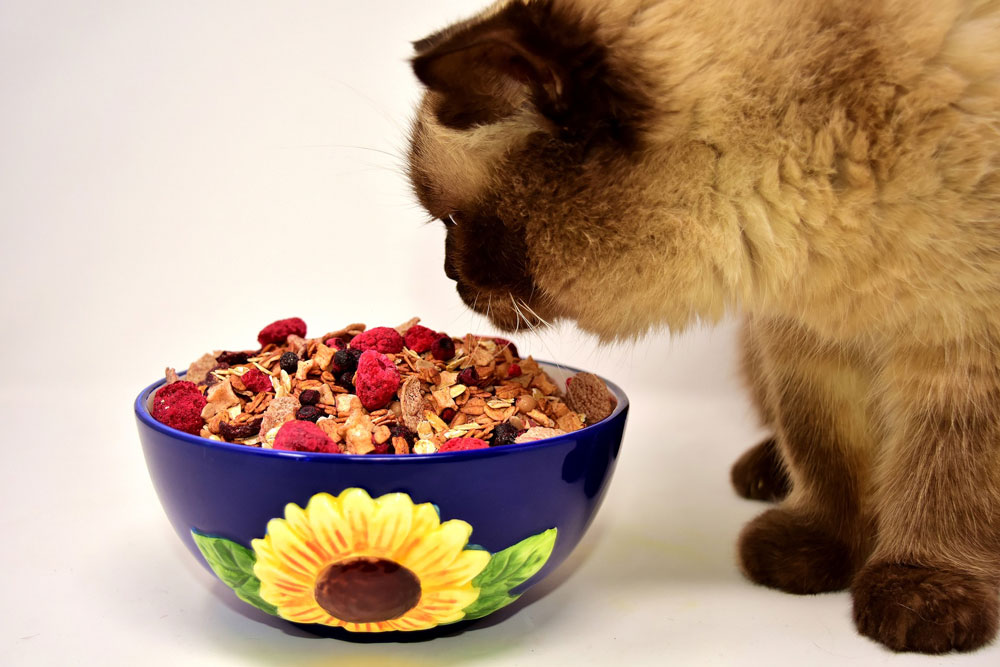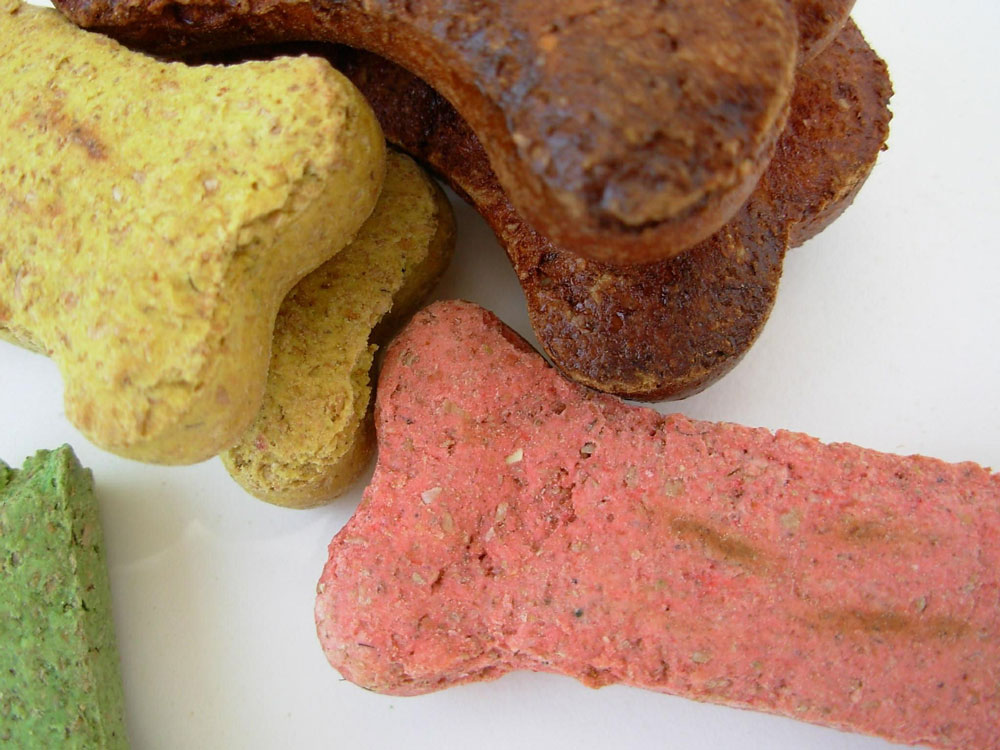At A Glance
- For optimal health, our animal companions must consume foods that are appropriate for their digestion – preferably fresh and whole foods, not processed.
- Convenient foods are not optimal.
- Animals can eat some processed foods, but should not exclusively consume them for their entire lives.
- The pet food industry is continually evolving and as consumers, we can drive that evolution in appropriate and sustainable ways if we are diligently monitoring the industry.
Don’t choose convenient over your pet’s health
We can probably all agree that all beings should consume foods appropriate for their species. Carnivores have a digestive tract and teeth designed to acquire and process meat, organs, etc. Vegetarian animals have teeth meant for prolonged chewing and longer digestive tracts to process the fiber in their diet.
Being carnivores, dogs and cats have not evolved to digest corn, wheat, rice, potatoes, or legumes, but these are primary ingredients in many processed pet foods. Dogs and cats are resilient. They don’t die immediately when eating biologically inappropriate foods—just as we humans don’t die right away eating Doritos and drinking Mountain Dew or Monster drinks. Over time though, we see significant physical degeneration from a lifetime of eating the wrong foods. Because we don’t always see an immediate negative effect, we continue to feed our pets a processed diet. We have created many generations of animals suffering from degenerative diseases that can be linked to these poor quality diets.
Feed the best diet you can afford
I know some of you might be thinking “I’d love to feed my pet AND myself 100% non-GMO, minimally stressed, pasture-raised foods, but I simply can’t afford that.” I get it. We all have to make choices in how we spend our hard-earned money, but I definitely recommend you feed your family (both two and four-leg varieties) as much fresh, unprocessed food as possible. Start out small—feed a small amount of fresh food as snacks to your animal companions at first. When you can, transition to feeding 2-4 fresh food meals per week or adding fresh ingredients to the kibble or canned diet you are currently feeding. If you can afford more, feed one meal of the day as fresh food and the other meal processed. Do what you can. The goal isn’t to get you stressed about not being able to switch to completely fresh food for your pet, but to give you information and help you find ways to make it work within your budget. Research shows that offering some healthy foods can provide some improvement in your companion’s health. And if your pet has less health issues, that’s less visits to the veterinarian. That means a little more money to apply to the food budget and that is a cycle of goodness!
Best to worst foods to feed your pet
The top 3 pet foods are:
- Nutritionally balanced raw home prepared diet
- Nutritionally balanced cooked home prepared diet
- Commercially available, balanced raw food diet
Good quality pet foods:
- Dehydrated or freeze-dried raw
- Commercially available cooked or refrigerated food
- Human grade canned food
- Super premium canned food
Medium quality pet foods:
- Human grade dry food
- Super premium dry food
Low quality/problem ingredient pet foods:
- Grocery store branded canned food
- Grocery store branded dry food
- Semi-moist pouched food
- Unbalanced home prepared diet (raw or cooked)
Let’s go a little deeper into each group.
Nutritionally balanced raw home prepared diet
With home prepared raw diets, you are able to select the ingredients. You know the source and quality of all ingredients. If your dog is allergic to chicken, you just pick a different protein. You can wash the veggies to remove any pesticide residue and you purchase all ingredients from the sources you feel are most reliable. Raw food contains all the enzymes and nutrients that might be destroyed during processing. You can purchase ingredients & feed seasonally—sometimes on sale and definitely in balance. Or you might grow some of your own ingredients. There’s peace of mind making your own food since it’s increasingly difficult to find ethical pet food companies. While being the best quality diet you can feed your dog or cat, it is critical you follow a recipe that is nutritionally balanced. Many home prepared and prey model diets are available that are deficient in trace minerals, manganese, magnesium, vitamins E & D, zinc, copper, choline, calcium, phosphorus, & fatty acids. You can currently obtain free recipes for healthy animals at www.balanceIT.com. Click on the Homemade Food tab at the top, then select “free autobalancer EZ”. If your pet has a medical condition, click on “Free Autobalancer EZ for vet patients”. If you’re using the vet patient autobalancer, your veterinarian may receive a request to approve your diet choice.
Nutritionally balanced cooked home prepared diet
You get all the benefits of home-prepared raw diet as above minus some of the enzymes and phytonutrients found in raw. There are a few nutrients such as lycopene, that are more bioavailable when cooked. Some pets prefer cooked or warm food and some people just prefer to cook their pet’s food. Additionally, pets with some medical conditions should have cooked food.
Commercially available raw diet
This is definitely a buyer-beware situation! There are numerous raw diets on the market today that are not nutritionally balanced and complete. The foods should declare on the label “for supplemental or intermittent feeding”. Don’t feed these foods without adding the missing nutrients in the proper ratios or your animal could have medical issues secondary to nutritional deficiencies. There’s wide variability here in quality of ingredients, sourcing, bacterial contamination, etc. I’ll go into more detail regarding these diets in a separate post.
Dehydrated or freeze dried raw
These diets have a long shelf life so they’re very convenient. All you need to do is add water. If you can’t or don’t want to feed fresh raw, this should definitely be a consideration! Also, having some on hand in case of an emergency that leaves you without power for days or weeks (earthquakes, hurricanes, tornados) is awesome. This type of food is great for boarding, travel, or camping too. Make sure your brand is nutritionally balanced for all life stages. It’s the next best thing to fresh raw food diet.
Commercially available cooked or refrigerated food
These diets are exploding in popularity right now! You can find them in refrigerated section of pet stores and human groceries and there are some companies in different cities that offer them too. (Just Food for Dogs is one option in the LA area.) The quality of raw materials in these foods range from terrible to excellent, so do your research! Moisture content of these foods is good, the food is fresher than processed diets and diets usually are gently cooked, so the proteins are slightly denatured.
Human grade canned food
Unless the label or the manufacturer’s website says the ingredients are human grade, don’t assume they are. This food is more expensive than animal grade or feed grade canned diets. These are usually found at independent retailers.
Super premium canned food
These diets contain feed grade ingredients which means the food is not approved for human use. Moisture content is more biologically appropriate than dry food & many have good protein, fat, fiber and carb ratios. Generally, these foods can be purchased at chains like Petco, PetSmart or at some veterinary clinics.
Human grade dry food
No matter what, dry food is not biologically appropriate for dogs and cats as far as moisture content goes. Also, even grain-free dry foods have starches that cause inflammation in the body. Human grade tells you the ingredients have passed inspection. If the label says baked, that is more ideal. It means the food wasn’t extruded. Extrusion creates some carcinogens in the food, so best to avoid.
Super premium dry food
These foods are made with feed grade ingredients, so not approved for human consumption. They are usually naturally preserved. Many of these foods contain added grains or starch, which can harbor mycotoxins. Mycotoxins create inflammation and can cause numerous health issues.
Grocery store canned
The moisture content in these foods is better for your pet than dry foods, but they frequently contain grains and synthetic preservatives such as butylated hydroxyanisole (BHA), and butylated hydroxytoluene (BHT), and ethoxyquin.
Grocery dry food
These foods do not contain adequate moisture and have the issues noted in the grocery store canned above.
Semi-moist pouched food
These are wrong on so many levels! To make the food semi-moist, propylene glycol is added. It’s not healthy for dogs and cats to consume.
Unbalanced home prepared raw or cooked diet
Some people believe they can feed their dog or cat chicken and some veggies or whatever they are eating and everything will balance itself out. Feeding fresh home prepared food is great, but if the diet is nutritionally unbalanced, it can cause irreversible and potentially fatal health issues for your companion including endocrine abnormalities, skeletal abnormalities, and organ dysfunction. Nearly every veterinarian has seen patients harmed by these diets and its heartbreaking and preventable. Please take advantage of the free resources at www.balanceIT.com to provide a complete and balanced diet for your companion.
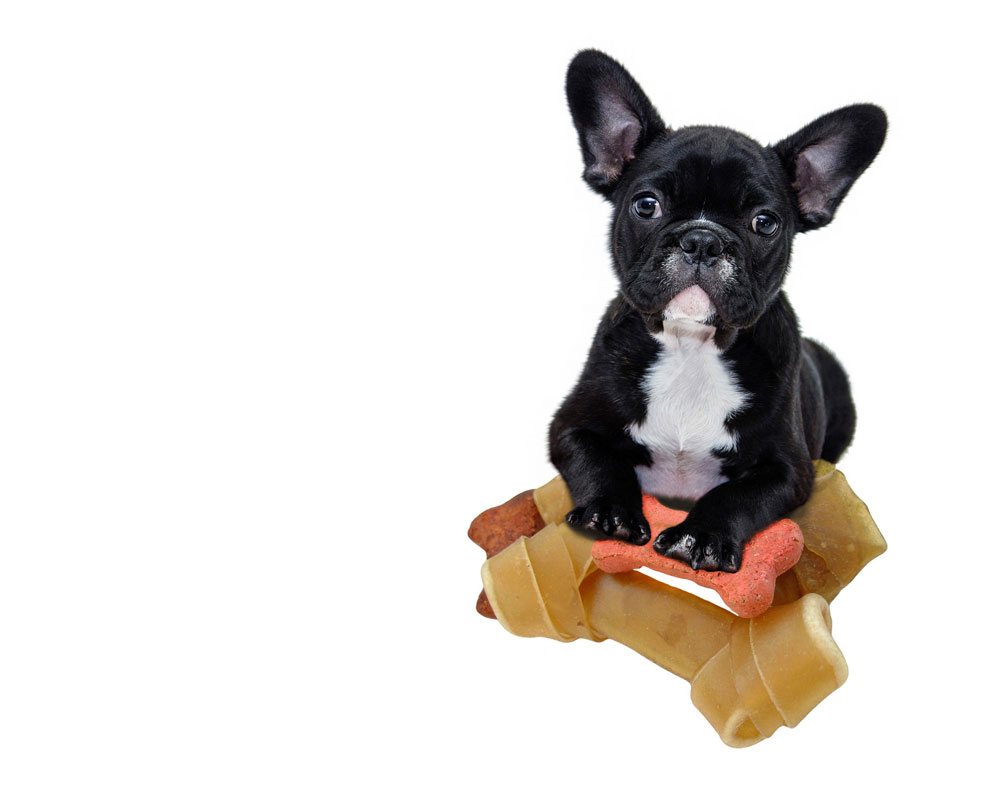
Whew—that’s a lot of information! There’s plenty more to cover, but this serves as a good starting point for you to begin your research. Remember, if you can’t afford or don’t have time to do the top recommendation all the time, do the best you can by offering some fresh food for your companion as often as you can while you continue to learn more about caring for them. Even small amounts of fresh food added to the diet daily can benefit your pet’s health.
Keep in touch and check the website for regular updates.
